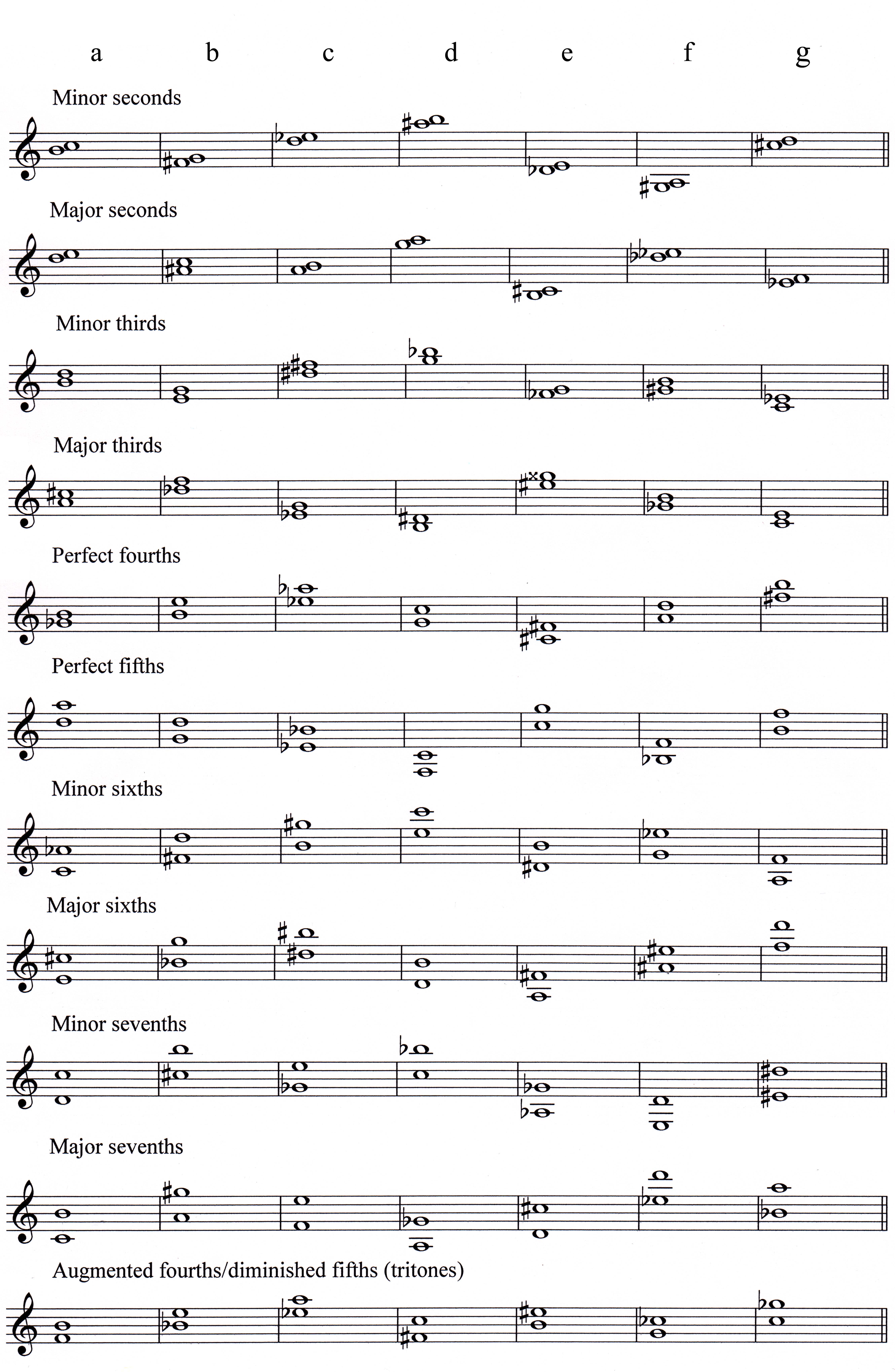
Before we move into this lesson,
let’s look at the answers to the question from the first installment. Here, in
review, are the questions: I.
What is (a) the dominant
of the B Major scale, (b) the mediant
of the D Major scale, and (c) the submediant
of the F# harmonic minor scale? II.
What degree of the scale is (a) C in A¨ major, (b) C in A minor, (c) G¨ in D¨
Major, (d) G# in F# minor, and (e) C in F Major? III.
What note is (a) a minor third above C, (b) a major
sixth above B, (c) a perfect fourth above D¨,
(d) an augmented fifth above A¨,
(e) a diminished fifth above D, (f) an augmented fifth above A¨, (g) a major third above F#, (h) a major second below E¨, (i) a perfect
fifth below B, and (j) a minor sixth below C? IV.
What is the inversion of (a) a major third, (b) a
perfect fifth, (c) an augmented second, (d) a minor seventh, (e) a major sixth,
and (f) a diminished fifth?
And the answers: 1)
(a)
F#, (b) F#, (c) D 2)
(a)
mediant, (b) mediant, (c) subdominant, (d) supertonic, (e) dominant 3)
(a)
Eb, (b) G#, (c) Gb, (d) E,
(e) Ab, (f) E, (g) A#, (h) Db, (i) E, (j) E 4)
(a)
minor sixth, (b) perfect fourth, (c) diminished seventh, (d) major second, (e)
minor third, (f) augmented fourth
It may seem like Greek to you, but review the last installment and
you’ll see. But more importantly, if you just stick with it, as with anything,
you will begin to make sense of what is being discussed.
Now to continue…
An interval is the distance between two notes, and all chords are made
up of intervals. Two notes sounded together constitute harmony, but a chord is
usually considered to have at least three notes (though two notes can suggest a
chord, but no more than that). Pairs of notes (intervals) are the raw materials
from which chords are built, and the raw materials of intervals are single
notes.
Different intervals have different qualities of sound; how an interval
is played depends upon the desired effect. If you play C and then E, the effect
is melodic; if you play them together, the effect gains a harmonic dimension.
Intervals can be divided into groups by the kind
of aural effect they have. Being able to identify intervals by ear is a
considerable advantage, and knowing how to categorize them enables you to tell
the difference between one and another. The two main types of intervals are consonant
and dissonant.
Consonant intervals sound pleasing, or at least comfortable, and they
include the perfect intervals (perfect octave, perfect fourth and, perfect
fifth), along with the major and minor third and the major and minor sixth.
Dissonant intervals sound unpleasant, aggressive, uncomfortable (think
fingernails on a chalkboard), and include the major and minor second and the
major and minor seventh. The dissonant tritone (augmented fourth or diminished
fifth) sounds vague and a bit lost, and not so annoying.
Learn to recognize all the intervals by sound so that you know what
interval you’re listening to and what its character is. Remember that it’s
easier to learn the character of a sound first, and then to identify the
interval. Intervals can be further divided and described in this way: Perfect intervals: Strong,
empty-sounding, dignified – make up your own adjectives. They sound satisfying
in themselves and don’t sound as if they need to be resolved. Thirds and sixths: Pleasing,
harmonious, friendly, cozy. Seconds and sevenths: Unfriendly,
aggressive, nasty – you couldn’t imagine playing one and then just leaving it
at that with nothing to follow it. Augmented fourth or diminished fifth: Unsatisfactory in a
vague sort of way. Not aggressive, but not comfortable.
In Ex. 1, there are samples of each kind of interval. Play them and listen
to them carefully, concentrating first on the way they sound. (To keep you on your toes, each group contains one
interval that is either wrongly notated or is not one of the right sound; the
answers are at the end). Make up your own examples to add to these. When you
can successfully identify their types from their sounds (it’s helpful to have
someone play them for you, so that you don’t know what notes you’re listening
to), then try to identify their size.

More descriptions you might find helpful: Both thirds and sixths sound
friendly: The Thirds are close friends; sixths are just friends. Seconds and
sevenths both are aggressive; seconds fight hand-to-hand combat, while sevenths
shoot across the street at one another. The final step is to ascertain whether
a third or sixth is major or minor.
There are, of course, more interval names
than interval sounds – with only 12
semi-tones in an octave, there can only be 13 different interval sounds (for
instance, an augmented third such as E to C#
is the same aural size as a perfect fourth such as E to F). Since they can’t be
differentiated by ear, we confine ourselves to the simpler and more useful
interval names.
Did you spot the booby-trapped intervals in Ex. 1? The following
examples have the right sound, but they are notated incorrectly: major second
(b); minor third (e); perfect fourth (a); minor seventh (c).
These intervals are wrong altogether: minor second (e); major third (f);
perfect fifth (g); minor sixth (c); major sixth (f); major seventh (d); tritone
(f).